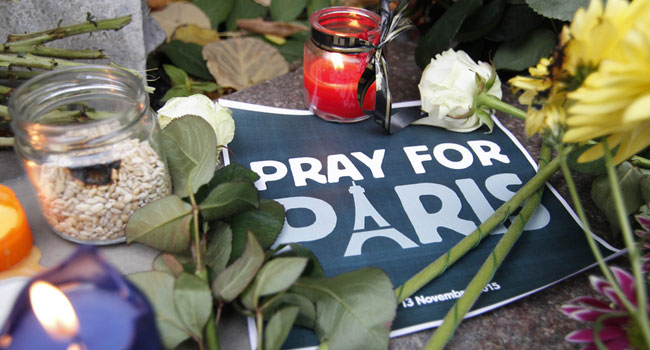
Industry Focus
I’m Fightin’ Mad about Paris
- By Ralph C. Jensen
- Jan 04, 2016
A few years ago I wrote an editorial that may
have bordered on national security. I received
several responses, one of which said I had
crossed the line, and that my opinion about national
security should not have been published. The reader
asked to be removed from our readership list.
His name was deleted.
Today, I plan to take a look at international security,
and frankly, I am not even getting close to the
line of invalidity. Security is an international problem,
and security has been about terrorism since 9/11.
So, with all due respect, I’m fightin’ mad about
the events in Paris a couple months ago. I’m writing
this commentary only a couple days after the Paris attacks,
but it appears to you in January 2016. The cowardly
attacks are fresh on my mind as of this writing.
I love Paris; I’ve been to the City of Lights on numerous
occasions. There is nothing about Paris that
I don’t enjoy. I applaud French President Francois
Hollande for his swift air force response from these
senseless attacks. I hope it is sustained, and that allies
of the French will dig in and support them.
Recently, the French have been hit with six separate
attacks from radical and extreme Muslims. You
might remember the shooting at the Charlie Hebdo
offices, and hours after that, a shooting at a convenience
market in another arrondissement of the city.
All of this extreme violence is about security, but
it seems impossible to stop something you can’t see.
People will go about their daily routine, I suppose, just
like terrorists go about their commitment to death and
destruction.When terrorists strike, as they did in Paris,
in a coordinated attack orchestrated by the Islamic
State that left at least 128 people dead, the events are
felt around the world as images and video of the aftermath
pour through mass communication channels.
Terrorists choose their targets not based on military
or political importance, but rather emotional
and visceral impact. There are notable behavioral and
psychological changes among victims and observers,
including the effects of terrorist attacks on consumer
behavior, specifically among those affected by extremist
actions in Israel. After all, one of the aims of
such actions is to disrupt economic and commercial
activity. Researchers have found that consumers will
change their habits in the wake of a terrorist attack,
at times drastically.
This is about security because governments plan
and train for such events. British intelligence has
foiled seven attacks in 2015, including one in October.
Though on a smaller scale, security on the global scene
kept British citizens safe. British Prime Minister David
Cameron could not, or would not, go in to detail.
Boris Johnson, the mayor of London, said, “What
we are doing is everything we possibly can and, of
course, it is right to say that although such an event
of that particular type [the Paris Attacks] may still be
unlucky, it would be absolutely wrong and irresponsible
to try and rule it out completely.”
Security experts are now studying how to deal
with a terrorist attack with a multiplicity of locations.
Cameron said the “disease of Islamist extremist violence
is a challenge we have to face.”
Britain plans to focus on several measures to
counter radical extremism, including maintaining
strong border controls, and having a chat with Vladimir
Putin to unite Russia with the joint military effort
against ISIL in Syria. A few bombs and missiles
will not transform the situation; however, getting allies
and all nations (Iran and Russia) in the region involved
with improved security measures might.
Terrorism is not going away in the United States.
Information shared among agencies and vigilance on
proven security techniques will help. Though Congress
is debating the PATRIOT Act and the USA
FREEDOM Act, terrorists are not taking a break.
The United States has to do even more with less when
it comes to drawing lines to possible terrorist plots.
Terrorists have threatened law enforcement more,
lately, as shown by an attack in Boston on June 2,
2015. Usaamah Adebullah Rahin drew a knife and
attacked police and FBI agents. His violent jihad was
to behead police officers.
This attack marked the 69th publicly known attack
since 9/11.
To secure the United States, more intelligence must
be shared among agencies, and overcome inter-agency
cultural barriers. The security industry in the United
States has always had an eye toward stopping bad
things before they happen. With 69 terror plots foiled,
it’s the one that gets through that deprives people the
ability to carry on with normal daily activities.
Furyk Nazar / Shutterstock.com
This article originally appeared in the January 2016 issue of Security Today.